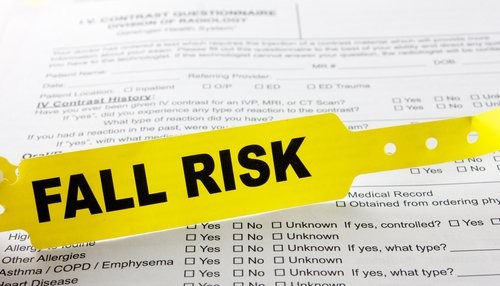Every 20 minutes an older adult dies from a fall? Millions of older people, those 65 and older, fall— and falling once doubles your chances of falling again! (Centers for Disease Control and Prevention, 2016) Falls are also the most common cause of non-fatal injuries and of hospital admissions for trauma.
Falls in a hospital or nursing home setting are happening more and sometimes with traumatic results; traumatic brain injury, hip fractures or other broken bones. In the elderly, a traumatic fall with severe injury often can be the start of a lasting decline in quality of life or even death in some cases.
So what can be done to prevent a fall? There are specific risk assessments the hospital or nursing home should be doing with every patient to evaluate fall risk:
- Conduct fall and injury risk assessment upon admission
- Reassess risk daily and with changes in patient condition
- Communicate risk using signage, bright color blankets, etc., to identify at high risk of falling
- Staff rounding every 1 to 2 hours on patients; address needs with individualized interventions; seat alarms, use non-skid floor mats, hip protectors, individualized toileting schedule; adjust the frequency of rounds
- Include patients, families, and caregivers in efforts to prevent falls
- Implement patient-specific intervention to prevent falls and injury
And did you know……
That if the patient is on any type of blood thinner medication they are at high risk of developing a brain bleed after a fall? Specific post fall criteria is required to monitor people with this additional risk !
Falls are preventable in hospitals and nursing homes but do take due diligence on the part of the care staff. If your loved one falls, make sure all of the identifiers were in place and correct actions were taken by the facility.
Call Paige Legal Nurse Consulting to assist you with any of your Fall Cases, we know what to look for in the medical records!
American Society for Healthcare Risk Management. (2015). Injuries from falls and immobility. Retrieved from ASHRM: http://www.ashrm.org/resources/patient-safety-portal/2015-ps-portal-HEN.dhtml#four
Centers for Disease Control and Prevention. (2016, May 6). Important facts about falls. Retrieved from CDC.gov: http://www.cdc.gov/homeandrecreationalsafety/falls/adultfalls.html

